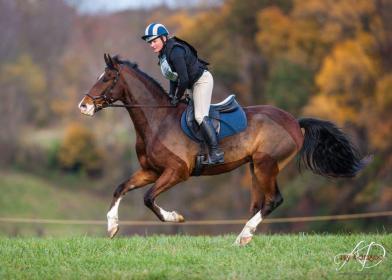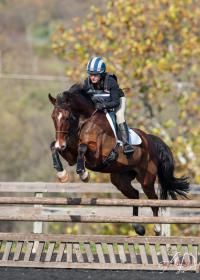I have only ever left my horses hairy, except if we go to a rated show in which case they get a full body clip and then I let it grow back out.
This year I am considering a partial clip since I will have an indoor and will be riding a lot throughout the winter.
It seems strange to me that most of the trace/irish/etc clips include clipping the belly and neck (which aren’t covered by a blanket) and yet leave the back hairy (where the blanket obviously does cover). I’m inclined to do the opposite- clip the chest and where the saddle pad sits (where they sweat the most) and leave the neck and belly with hair. Of course if we decide to show, I would body clip. Am I crazy??
Crazy? No.
I think it really depends on where you live and your horse’s living conditions (outside 24/7? Indoor board?) etc…
The reason some people will leave a patch under the saddle is for comfort under tack, but another reason is because if it is snowing heavily and you have snow sitting on your horse, the back/rump create a shelf of sorts and hold the snow so keeping some hair on the area helps to insulate the muscles and prevent a chill.
I have done clips where I have left the under belly full of hair, when Mare was on outdoor board, and I have done clips where she’s gone completely naked, when she’s on indoor board. I tend to modify when I need. I don’t show in the winter so having her look like a puzzle doesn’t bother either of us! Haha.
IIRC, the intention of the trace or hunter clip is to expose the large veins/arteries so that when the blood gets pumping during work, body heat can be more easily dissipated, right? But you’re right that that conflicts with keeping warm when not in work. And leaving long fur under the saddle or girth doesn’t give the benefit of easier cool out and grooming after work. It’s a dilemma.
Agree that you should do what works best for you and your horse. If you don’t show regularly in the winter there’s no harm in trying nontraditional clips.
I did a trace clip and it works great. Honestly, my horse is a wooly mammoth who sweats the most in his pit areas. I leave his belly completely hairy other than right where the girth sits (turned out at night in winter so don’t want to shave his belly). Without the clip his whole body (including back) gets sweaty. With the clip his back does not get very sweaty and if it does it is really quick to dry with a cooler. Last year I did just a bib and it was ok but still took forever to cool him out. I’m in love with how the trace clip is working. We don’t do a ton of shows over the winter and what we do nobody cares about clipping. I wouldn’t worry too much about weird clip jobs unless you are planning on going to A shows.
I do an Irish clip or a trace clip on my horse every year. I leave his belly hair because it’s not covered by a blanket, and he wears neck rugs on everything (sheet, all weights of blankets) so I can clip his neck with no issue. He gets the sweatiest on his girth area (once in a great while his neck gets sweaty if he’s really fiery that day.) If he sweats, I put a cooler on him. He lives out 24/7 and does just fine.
My guys live out and I had the same question about keeping warm! It hasn’t been a problem in past winters because I haven’t had access to an indoor and they really didn’t sweat too much in the cold. In the indoor, they are sweating like crazy even though I don’t feel like we’re working too hard. It’s time to clip, I’m just trying to figure out which clip I want to do.
Sorry, I’m of no help.
If I recall @kcmel does a really neat hybrid trace clip that leaves the belly.
At my massage therapist/saddle fitter suggestion I normally leave a half pad on Finnegan’s back. But my horse was inclined towards being cold backed and his hair under the saddle would get thin by the end of the season. He needed the extra protection.
I mostly would start the season with a Irish bib clip and would eventually go to a hunter clip leaving the legs long from knees/hocks down. But I foxhunted and trail rode so needed the leg protection. Finnegan also got a coat like a pony so I needed to clip off a decent amount or he would never dry. He is a grey/white pinto so short was easier to clean for those hunt mornings.
So far Carson is one of those TB’s that don’t grow a coat and I have not had to clip him.
I do a trace clip and leave the belly hair. It is not noticeable and it works perfectly for my horse.
@Redlei44 is correct in the concept of these partial clips being to expose areas with veins and arteries close to the surface to cool/dissipate heat more rapidly while keeping large muscle groups such as the back and buttocks warm.
I always use a neck cover/hood when I’ve clipped in the winter, specifically so that the clipped neck does not get cold while on turnout. You can generally attach them to blankets; I don’t bother with one if just putting on a sheet, but have one on both my medium and heavyweight blankets.
Thanks, that helps explain it. I think I’ll start with trace clip minus the belly and see how that works first.
I’m all for making up your own clip patterns! And roaching manes! Actually, when I have my clippers out, I make people very nervous.
I too wondered about the usefulness of a clip job that leaves hair where the blanket goes and the belly exposed. So that factoid about the veins is very interesting! My guy tends to get rain rot under his belly, so it is handy that most clip patterns include clipping that area to make sure that I can get MGT down to his skin when needed.
Yes. Here is a picture of the first derivation. Next time we did the front of the neck instead of the sides. [ATTACH=JSON]{“data-align”:“none”,“data-size”:“medium”,“data-attachmentid”:10283391}[/ATTACH]

[ATTACH=JSON]{“data-align”:“none”,“data-size”:“large”,“data-attachmentid”:10283452}[/ATTACH]
Here is the updated version:

This is the clip I did on my horse this year. The only belly hair I took off was his girth area. I did the same for a barn mate, except her horse got a “racing stripe” along his sides much like a traditional trace clip (still leaving most of the belly hair). When I reclip this week, I won’t do the bottom part of his face but will probably add stars on the other side of his hindquarters as well…because I didn’t have a horse as a child and my poor TB has to suffer for it sometimes…
We have a horse in the barn that also has patches left on his sides, where peoples heels sit. He just seems to always get rub points there, and if he gets clipped, they rub into sores. Not even for spurs, just where the heel sits.
It looks a little silly, because he has a trace clip, and then this random patch of hair…but it works for him, and that is the most important part.
